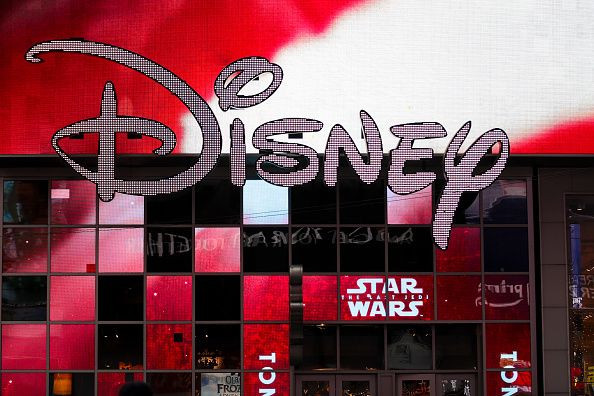Where Will Disney Be In 5 Years?

Few big companies have been as methodical with their investment strategy over the years as Disney (NYSE:DIS).
Under the guidance of CEO Bob Iger, the entertainment giant has made major acquisitions like clockwork every few years, scooping up a valuable intellectual property that it then folds into its flywheel business, unlocking value with its movies, theme parks, and consumer products.
Disney acquired Pixar in 2006, then Marvel in 2009, and Lucasfilm in 2012, bringing under its umbrella much-loved entertainment brands like Toy Story, the Avengers, and Star Wars. Earlier this year, the company made another such move, completing its biggest acquisition ever with its $71 billion takeover of 21st Century Fox's entertainment assets. That deal gives Disney even more firepower as it prepares to launch its new Disney+ streaming service later this year, making its long-awaited bid for the now-massive over-the-top video market.
The streaming push
Disney's next five years will be defined more than anything else by its transition to streaming. Once the Disney+ service launches in November, the company will have three distinct direct-to-consumer properties, including ESPN+, which now has 2 million subscribers, and Hulu. It currently owns two-thirds of Hulu but fully controls it after making the Fox acquisition and working out a complex deal with Comcast, which owns the other third.
At its Investor Day conference in April, the company unveiled its Disney+ service and outlined its broader streaming strategy, sending the stock up double digits to all-time highs as the market cheered the big reveal. Disney said it expected Disney+ to reach profitability by 2024 and is targeting between 60 million and 90 million subscribers in five years. At ESPN+, it expects to have 12 million subscribers by 2024, and for Hulu to grow from about 28 million subscribers today to 40 million by 2024. It also sees the TV-based streaming service turning profitable by that year.
Disney's media strategy shows a company willing to absorb large losses as it transitions to the future of video entertainment. The move will not only cost it in the near term as it builds out new platforms but also as it cannibalizes its traditional cable and network television business (historically, its most profitable segment).
The growth forecasts also indicate that Disney expects the Disney+ service to be the jewel in its three-pronged streaming attack. However, its modest expectations for ESPN+ are a sign that the company is unwilling to stuff the app with top-notch sports content that might steal viewers from ESPN (one of its biggest cash cows), though the top cable network has been gradually losing subscribers.
While the streaming strategy may sacrifice profit in the near term, it will almost certainly put Disney in a stronger position five years from now, especially given the direct pipeline to consumers its potent portfolio of characters and franchises like Star Wars, Marvel, and Pixar will have in Disney+.
Other projects
Disney's movie studio division, meanwhile, looks even stronger following the Fox acquisition. The entertainment giant gained a number of valuable properties including Avatar, the highest-grossing movie of all time, from the deal. Disney now plans to release Avatar and Star Wars sequels in alternating Decembers from 2021 to 2027, likely giving the company a stranglehold on the holiday box office over the next decade. The move should also help prevent potential Star Wars fatigue, as Disney had been releasing Star Wars blockbusters annually since 2015.
The Fox deal also gives Disney ownership of Marvel characters like X-Men, Deadpool, and Fantastic Four, which could fuel more box-office hits, though the company has yet to announce specific plans in that area.
On the theme-park front, Disney has big plans as well. The company will soon open Star Wars Land at its two American theme parks, and it is expected to spend $24 billion over the next five years on its parks and resorts, including major expansions at all six of its theme parks. Iger has also said that a seventh resort is an "inevitability" in China or somewhere else, though no plans have been announced.
A clear picture emerges
While CEO Iger is set to retire in 2021, leaving a question mark in the executive chair, he's leaving his successor with a formidable, forward-looking foundation for the world's biggest entertainment company to build on over the next generation. Disney's theme parks and studio divisions should see expansive growth over the next five years. In streaming and legacy media, the picture remains cloudier, as it will take years for the company to recoup losses from its streaming investments, the cannibalization of its traditional media business, and the end of its licensing business to streamers like Netflix. However, the overwhelmingly positive response to the Disney+ announcement from both consumers and investors shows that demand for the company's video entertainment is virtually boundless, and the new streaming service seems guaranteed to find a wide audience.
While Disney's bottom line may not have improved that much by 2024, the company's pivot to streaming will position it for long-term growth, and its theme parks and movie studios will have even more muscle to flex. For investors looking for a combination of value and growth, along with a suite of competitive advantages, Disney continues to look like an appealing choice.
This article originally appeared in The Motley Fool.
Jeremy Bowman owns shares of Netflix and Walt Disney. The Motley Fool owns shares of and recommends Netflix and Walt Disney. The Motley Fool recommends Comcast. The Motley Fool has a disclosure policy..




















